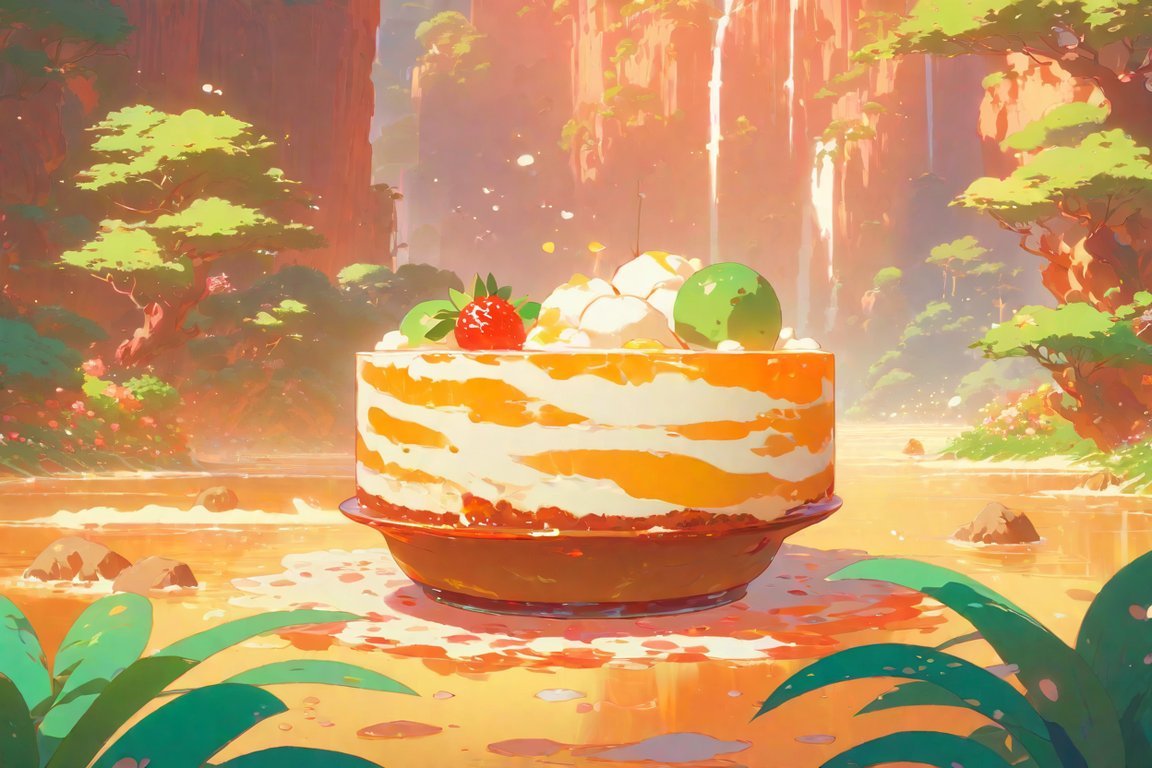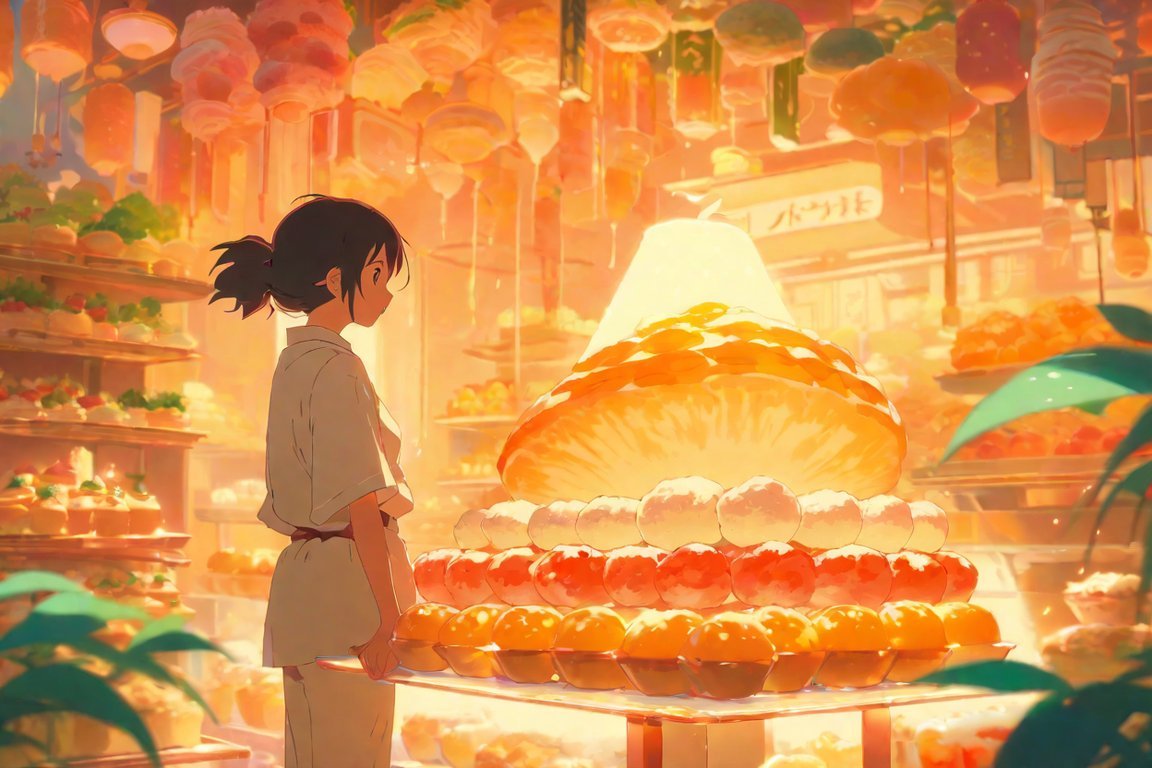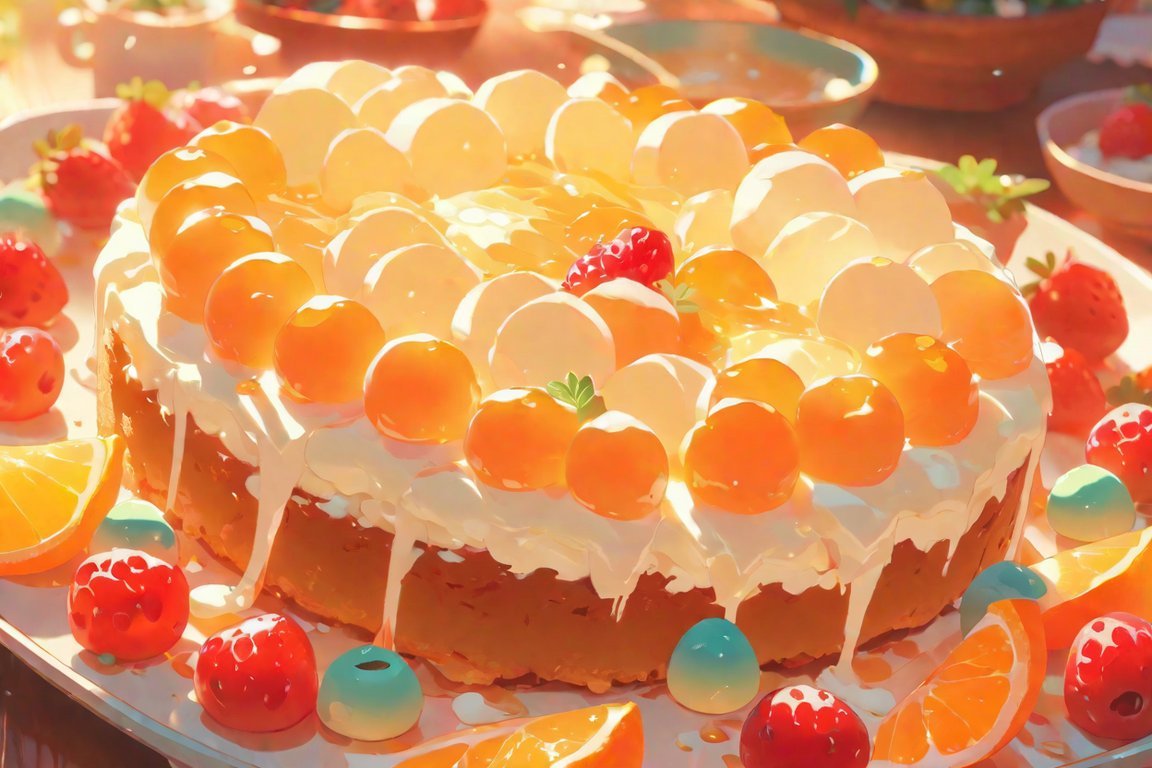If you have a sweet tooth and a curiosity for dessert facts, get ready for a mouthwatering journey through the world of confectionery delights. In this article, titled Delicious Dessert Facts: Uncovering Sweet Trivia, we will delve into the fascinating realm of all things sugary and satisfying. From the intriguing history of iconic treats to the lesser-known tidbits that will surprise even the most seasoned dessert enthusiasts, this article is a treasure trove of captivating dessert knowledge. Whether you’re a culinary expert or simply enjoy indulging in the occasional sweet treat, prepare to be enthralled by the delightful trivia that awaits.

Key Takeaways:
- German chocolate cake is actually named after an American baker, Sam German, not a German baker.
- The most expensive ice cream and dessert is “The Frrrozen Haute Chocolate ice cream sundae,” costing $25,000.
- The word “dessert” comes from the French verb “desservir,” meaning “to clear the table.”
- Traditional British mince pies originally contained meat but evolved to become a sweet treat.
- Gold spoons are used by ice cream testers to ensure a pure taste without any metallic aftertaste.
- Ice cream is the most missed item by astronauts in space, according to NASA.
- These dessert facts add depth to our appreciation of sweet treats and highlight their cultural significance.
Dessert Facts
German Chocolate Cake: Not Actually German
Did you know that German chocolate cake is not actually German? Despite its name, this beloved dessert was named after an American baker named Sam German. It turns out that Sam German was an employee of an American chocolate company, not a German baker. German chocolate cake is renowned for its rich and indulgent chocolate flavor, making it a favorite treat for many dessert enthusiasts.
The Most Expensive Ice Cream: The Frrrozen Haute Chocolate
If you’re a true dessert connoisseur, you might be interested to know that the most expensive ice cream in the world is called “The Frrrozen Haute Chocolate ice cream sundae.” This extravagant dessert comes with a whopping price tag of $25,000! What makes it so expensive? Well, it includes edible gold and is served in a golden goblet, truly making it a luxurious treat for those with a taste for the finer things in life.
The Origin of the Word “Dessert”
Have you ever wondered where the word “dessert” comes from? It actually stems from the French verb “desservir,” which means “to clear the table.” Historically, desserts were served after the main course to allow the tables to be cleared for other activities. This origin highlights the historical significance of desserts in dining traditions and adds a fascinating layer to our appreciation of these sweet treats.
Early Mince Pies: With Actual Meat
Here’s an interesting fact about British desserts—early mince pies actually contained meat! These pies were a combination of savory and sweet ingredients, including spices, fruit, and meat. Over time, the recipe evolved to exclude meat, and mince pies became the sweet treat we know today. It’s fascinating to see how desserts can transform and adapt over the years, reflecting changes in culinary preferences and cultural traditions.
Gold Spoons for Ice Cream Testing
Ever wonder why ice cream testers use gold spoons? It’s not just for show—gold spoons actually ensure a pure taste without any metallic aftertaste. Regular spoons can potentially alter the flavor of the ice cream, while gold spoons maintain the integrity of the taste experience. This attention to detail in creating the perfect ice cream experience showcases the dedication and craftsmanship that goes into this beloved dessert.
Ice Cream: A Missed Item in Space
Did you know that according to NASA, ice cream is the most missed item by astronauts in space? The absence of this beloved frozen treat is deeply felt during their time in orbit. This fact highlights the universal love and comfort that ice cream brings, even in the most extraordinary circumstances. It’s a reminder of the simple pleasures we often take for granted and the joy that desserts can bring to our lives.
These dessert facts provide a glimpse into the fascinating world of sweet treats. Whether it’s uncovering the true origins of a famous cake, indulging in an extravagant ice cream sundae, or exploring the historical significance of desserts, there is always more to discover. So, the next time you enjoy a slice of German chocolate cake or savor a spoonful of ice cream, remember the intriguing stories and trivia that lie behind these delectable delights.
Here are some fascinating facts that you won’t want to miss out on! Discover the intriguing world of architecture with these engaging facts on architecture. Immerse yourself in the wonders of the coastal plains and uncover their unique features through these captivating facts about the coastal plains. Let’s dive into the delightful realm of macarons and explore their interesting history and flavors with these surprising facts about macarons. Unearth the captivating secrets of the magnificent Karnak Temple with these intriguing facts about Karnak Temple. Craving a delectable treat? Delve into the mouthwatering world of churros and discover their interesting origins and varieties with these exciting facts about churros. Bubble tea enthusiasts, get ready to be amazed! Uncover fascinating insights and flavors with these intriguing facts about boba. Get ready for some ooey-gooey fun! Explore the world of slime with these surprising facts about slime. Immerse yourself in the enchanting world of coastal plains and uncover their unique features through these fascinating facts about coastal plains. Embark on an adventure into the awe-inspiring Maya civilization with these interesting facts about the Maya civilization. Dive into the rich history and culture of Chad with these captivating facts about Chad.
The Evolution of Dessert Presentation and Plating
Desserts have come a long way since their early beginnings, evolving into an art form that not only tantalizes our taste buds but also captivates our eyes. The evolution of dessert presentation and plating has transformed sweet treats into visually stunning creations that leave a lasting impression. From ancient civilizations to modern-day pastry chefs, the artistry and technique behind dessert presentation have played a significant role in shaping the culinary world.
Desserts Through the Ages
Desserts have a rich history that dates back centuries, with each era contributing to their evolution. Early sweet treats were simple and humble, reserved only for special occasions and celebrations. As time went on, desserts became more intricate and diverse, reflecting the cultural influences of different regions and societies.
Global Dessert Traditions
Countries around the world have their own unique dessert traditions, showcasing the flavors and techniques of their culinary heritage. Whether it’s the delicate French pastries, creamy Italian gelato, or the indulgent Indian sweets, each culture has contributed to the vast repertoire of dessert delights.
The Science of Desserts
Creating the perfect dessert goes beyond just flavors and ingredients. Baking techniques, ingredient ratios, and temperature control all play a crucial role in achieving the desired texture, flavor, and presentation. Pastry chefs and cooks carefully consider these factors to ensure that their creations are not only visually appealing but also deliciously satisfying.
Classic Desserts That Stand the Test of Time
Some desserts have stood the test of time and remain beloved classics that have delighted generations. From the comforting sweetness of apple pie to the irresistible allure of chocolate chip cookies, these timeless treats continue to bring joy and nostalgia to dessert enthusiasts worldwide. The enduring popularity of these classics is a testament to their universal appeal and the skillful craftsmanship that goes into creating them.
Dessert Presentation: Where Art Meets Technique
The presentation of a dessert is an art form in itself. Pastry chefs and cooks carefully arrange the components of a plated dessert, considering factors such as color, texture, and shape to create an enticing visual experience. The use of garnishes and attention to detail further enhance the overall presentation, transforming a simple dessert into a work of art.
Dessert Plating Techniques and Trends
Dessert plating styles are constantly evolving, thanks to the creativity of pastry chefs and cooks. Past trends included towering architectural assemblies that showcased the complexity and skill involved. Modern trends, on the other hand, focus on minimalistic and visually appealing presentations. Plated desserts are assembled at the last minute, ensuring freshness and an enhanced dining experience.
The Importance of Presentation in Desserts
Presentation plays a crucial role in the enjoyment of desserts. The art of plating desserts involves careful arrangement, the use of garnishes, and attention to detail to create an enticing visual experience. Dessert enthusiasts are captivated by the stunning presentations seen at festivals and competitions, further highlighting the strong connection between visual appeal and the overall dessert experience.
Key Takeaways:
- Desserts have evolved from simple sweet dishes to intricate and visually stunning creations.
- Global dessert traditions showcase the diverse flavors and techniques of different cultures.
- Creating the perfect dessert requires a combination of art, science, and culinary skill.
- Classic desserts continue to bring joy and nostalgia across generations.
- Dessert presentation is an art form that involves careful arrangement and attention to detail.
- Plating techniques and trends in desserts constantly evolve, reflecting the creativity of pastry chefs.
- The presentation of desserts is crucial in enhancing the overall dessert experience.
References:
- Facts.net – Dessert Facts
- BCcampus Open Publishing – Plated Desserts
Unusual dessert pairings that surprisingly work well
As a seasoned food journalist with a passion for all things sweet, I can confidently say that dessert is a delightful world filled with endless possibilities. While many may stick to the classics like apple pie or chocolate chip cookies, there is a whole realm of unusual dessert pairings that surprisingly work well. These combinations offer a mix of sweet and savory flavors that can be both comforting and unexpected. So, if you’re feeling adventurous and want to tantalize your taste buds, here are some unique dessert pairings worth exploring.
1. Ice Cream and Fries
Yes, you read that right! The combination of ice cream and fries may sound strange at first, but it’s a match made in dessert heaven. The contrast between the creamy sweetness of the ice cream and the salty crunchiness of the fries creates a delightful symphony of flavors and textures. It’s like having dessert and a side of fries all in one bite. Give it a try, and you might just find your new favorite guilty pleasure.
2. Chocolate Covered Fries
If you’re not quite ready to dive into the ice cream and fries combo, how about dipping your fries in chocolate? Chocolate covered fries take the indulgence factor to a whole new level. The rich, velvety chocolate coating the crispy fries creates a perfect harmony of sweet and salty. It’s a unique twist on the classic chocolate-dipped treats and is sure to satisfy any cravings for the perfect balance of flavors.
3. Apple Pie with Cheddar Cheese
Apple pie and cheddar cheese may seem like an odd pairing, but it’s a combination that has stood the test of time. The sweet and tart flavors of the apple pie complement the sharpness of the cheddar cheese, creating a delightful contrast of tastes. It’s a classic dessert combo that has been beloved for generations and is a must-try for anyone seeking a unique twist on a traditional favorite.
4. Bacon Ice Cream
Bacon lovers rejoice! Bacon ice cream is a sweet and savory treat that takes indulgence to a whole new level. The smoky, salty flavor of the bacon complements the creamy sweetness of the ice cream, creating a unique and unforgettable taste experience. Whether you’re a bacon aficionado or simply curious about unusual dessert pairings, bacon ice cream is a must-try for those who dare to push culinary boundaries.
5. Onion Chocolate Chip Cookies
Now, this may be the most adventurous pairing on the list. Onion chocolate chip cookies may sound strange, but trust me, they work surprisingly well. The sweetness of the chocolate chips balances out the subtle savory notes of the onion, creating a unique and intriguing flavor combination. It’s a dessert that will definitely make you question your taste buds, but in the best possible way.
While these unusual dessert pairings may not be everyone’s cup of tea, they offer a fun and interesting culinary experience for adventurous eaters. They showcase the limitless creativity and innovation in the world of desserts, proving that sometimes the most unexpected combinations can result in the most delectable treats.
Key Takeaways:
- Unusual dessert pairings can provide a unique and surprising taste experience.
- Examples of unusual dessert pairings include ice cream and fries, chocolate covered fries, apple pie with cheddar cheese, bacon ice cream, and onion chocolate chip cookies.
- These combinations offer a mix of sweet and savory flavors that can be both comforting and unexpected.
- Some people may find these combinations intriguing and enjoyable, while others may prefer more traditional dessert options.
- Unique desserts can add a creative and fun twist to traditional dessert options and can be enjoyed on special occasions or as a treat for oneself.
References:
- mashed.com – 12 Unique Dessert Pairings That Sound Unusual But Work Surprisingly Well
- Taste of Home – 10 Unexpected Dessert Combinations That Are Actually Delicious
Dessert-related Traditions and Customs Across Different Cultures
Key Takeaways:
– Desserts play a significant role in showcasing the customs and traditions of different cultures around the world.
– Desserts have evolved over time, reflecting cultural influences and local ingredients.
– Each country has its own unique dessert traditions that offer a glimpse into its culinary heritage.
– Baking techniques, ingredient ratios, and temperature control are essential in creating the perfect dessert.
Desserts have always held a special place in cultures across the globe. These sweet treats not only tantalize our taste buds but also provide a glimpse into the customs and traditions of different societies. From ancient civilizations to modern times, desserts have evolved, showcasing unique flavors, ingredients, and techniques. Let’s explore the delightful world of dessert-related traditions and customs across different cultures.
1. French Patisserie: A Symphony of Flavors
Source: Tasting Table
France is renowned for its exquisite pastries and desserts. From the buttery croissants to the elaborate opera cake, French patisseries are a testament to the country’s culinary excellence. These delicate creations often require intricate techniques and precise measurements, making them a true work of art. Whether it’s the airy macarons or the luscious crème brûlée, French desserts exude sophistication and are often enjoyed as a part of daily life or special celebrations.
2. Italian Gelato: Cool and Creamy Delights
Source: Tasting Table
Italy’s gelato tradition dates back to ancient Roman times. Unlike regular ice cream, gelato is known for its intense flavors and smooth, creamy texture. Italian gelato masters meticulously craft their creations using fresh and natural ingredients. The result is a frozen treat that delights the palate and showcases the rich flavors of fruits, nuts, and other traditional Italian ingredients. Gelato is not just a dessert in Italy; it’s an integral part of the Italian way of life.
3. Indian Sweets: A Celebration of Culture
India boasts a vast array of sweets that are deeply rooted in its traditions and customs. These desserts, known as mithai, are an essential part of festivals, weddings, and celebrations. From the syrupy gulab jamun to the fragrant and aromatic jalebi, Indian sweets are made using a variety of ingredients such as milk, ghee, sugar, and aromatic spices like cardamom and saffron. Each region in India has its own unique sweet specialties, reflecting the diversity of the country.
4. Japanese Wagashi: Artistry in Confectionery
Japan’s confectionery culture is a perfect blend of artistry and delicate flavors. Wagashi, traditional Japanese sweets, are often served with tea in tea ceremonies. These visually stunning treats showcase the elegance and attention to detail that Japanese culture values. Made from ingredients like sweet bean paste and mochi rice cake, wagashi come in a variety of shapes, colors, and flavors. Each wagashi tells a story, making them not just desserts but edible works of art.
5. Mexican Churros: Fried Dough Delights
Mexico has a long history of delicious desserts, and among the most popular is the churro. These fried strips of dough are often coated in cinnamon sugar, creating a crispy and sweet treat. In Mexico, churros are commonly enjoyed with a cup of hot chocolate, making it a perfect indulgence during chilly evenings. Whether enjoyed on the streets or in traditional Mexican establishments, churros are a beloved dessert that continues to be cherished across generations.
6. Middle Eastern Baklava: Layers of Sweetness
Baklava, a pastry made from layers of phyllo dough filled with nuts and sweet syrup, is a dessert that originated in the Middle East. This indulgent treat is often associated with special occasions and gatherings. The art of making baklava requires precision, as the layers of dough must be carefully stacked and saturated with syrup to achieve the perfect balance of textures and flavors. With its rich history and delectable taste, baklava is a staple in Middle Eastern cuisine.
7. American Apple Pie: A Taste of Tradition
Source: Taste of Home
Apple pie is an iconic dessert in American culture, evoking feelings of nostalgia and tradition. Whether baked at home or enjoyed at a local diner, apple pie holds a special place in the hearts of Americans. The combination of tangy apples, warm spices, and flaky crust creates a timeless dessert that is often associated with family gatherings, holidays, and celebrations.
Dessert-related traditions and customs vary across cultures, celebrating unique flavors, preparation techniques, and historical influences. Exploring these traditions not only satisfies our sweet tooth but also offers a deeper understanding of the customs and heritage of different societies. So, the next time you indulge in a dessert from another culture, take a moment to appreciate the rich history and cultural significance behind each delectable bite.

FAQ
Q1: What is the most expensive dessert in the world?
A1: The most expensive dessert is “The Frrrozen Haute Chocolate ice cream sundae” which costs a whopping $25,000. It is a luxurious treat that includes edible gold and is served in a golden goblet.
Q2: Is German chocolate cake actually from Germany?
A2: No, German chocolate cake is not actually from Germany. It is named after an American baker named Sam German who was an employee of an American chocolate company.
Q3: Why are gold spoons used for ice cream testing?
A3: Gold spoons are used for ice cream testing to ensure a pure taste without any metallic aftertaste. Regular spoons can potentially cause flavor deviation.
Q4: What did early mince pies contain?
A4: Early mince pies, a traditional British dessert, actually contained meat. They were a combination of savory and sweet ingredients, including spices, fruit, and meat. Over time, the recipe evolved to exclude meat, and mince pies became a sweet treat.
Q5: Why are desserts referred to as “dessert”?
A5: The word “dessert” comes from the French verb “desservir,” meaning “to clear the table”. Historically, desserts were consumed after the main course to allow the tables to be cleared for other activities.
















